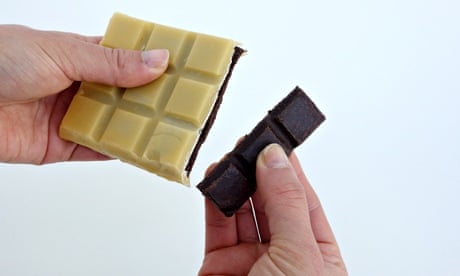Many people think that design is about prettification. But those people are horribly, dreadfully wrong. Design is much more than that; it's a superpower, and with it you can change the world.
Through the RSA's Great Recovery project, I've spent the past couple of years looking at the role that design plays in moving us from a linear economy – where we dig up elements in Africa, process them in Asia, ship them to us, then throw them in a hole in the ground a few months later – to a circular economy, where valuable elements are kept in play and reused or preprocessed.
This shift entails a complete rethink of "business as usual" and we've found that bringing designers into the conversation is usefully disruptive. The RSA has developed four models to help us start to redesign products that are currently designed to be bought then thrown away, and we lead mixed disciplinary groups of designers, material scientists, policy-makers and marketers through a process that helps them redesign these products for longevity, service, remanufacture and disassembly.
The process has been accelerated by the Technology Strategy Board dangling cash carrots for those who propose radical redesigns of objects such as the lightbulb, kettle and paint pot.
Business must wake up to the pressing need to innovate using design. I would argue designers and design thinking are the most essential tools in arming business with the disruptive new products and services they need to stay competitive. I won't bore you with fact that the world's most valuable company, Apple, has design as the cornerstone of its business process. More importantly, designers can help the world move away from the negative environmental and social impacts associated with the increasingly expensive and inefficient practices of the linear economy.
The best thing we can do to achieve this is to equip our young people with the skills they need to enable global business to take this brave step. For 90 years, the RSA has run the Student Design Awards, which prompts students right at the beginning of their careers to consider the world's most pressing problems. Where better to focus them than on redesigning our linear consumer culture?
Several of our winning projects this year focused on longevity – keeping materials in use for as long as possible – and if businesses are wanting for ideas, look no further. Aye Skipper by Samuel Hoh is a logistics service and app that enables businesses to offer clean and safe waste materials and products to their local community, thereby reducing waste and associated disposal costs, and supporting reuse and upcycling of useful materials.
We also saw innovative packaging solutions, such as a new paint container by Alex Machin that reduces both paint and packaging waste. It has a one-way pouring valve that prevents paint from drying out; the paint is stored in a bag made from a metallised polyethylene terephthalate (PET) that maintains its temperature – and the cardboard outer, plastic lid and valve can all be recycled.
Riikka Suominen and Thea Engerdahl created a food packaging brand made from beeswax, a natural material that is sustainable and simple to produce while effectively protecting and preserving food. Cleverly, production of this packaging will furthermore increase beekeeping and contribute to stabilising bee populations.
Ideas around the sharing economy are often my personal favourites, especially when you consider that the average power drill will get used for only 10 minutes in its lifetime. This year we had some great entries, showing that the notion that we don't actually have to own what we want to use is taking off. For example, The Community Rail by Lee Clarke is a system for leasing bulky items, such as vacuum cleaners, which is installed in communal areas of limited space accommodation, such as single room flats or student halls. The communal rail eliminates unnecessary ownership of bulky equipment, while providing a space for social interaction among residents.
In a similar vein, Joshua Dean designed a service that enables people to borrow seldom-used products from their local libraries and, in the process, reinvigorates libraries as relevant, valuable public services.
As we all begin to wake up to the potential of redesigning our systems to a more circular model, not only to save valuable resources but also money, it's vital that we enable the next generation of designers to use their skills to improve their lives and those of the people around them.
They are, after all, inheriting our mess, so the least we can do is help them tidy it up.
Nat Hunter is co-director of design at the Royal Society of Arts
Join our community of arts, culture and creative professionals by signing up free to the Guardian Culture Pros Network.

Comments (…)
Sign in or create your Guardian account to join the discussion